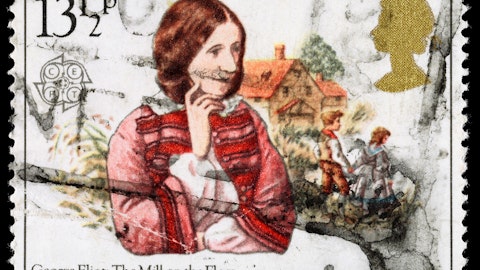As we did with the VTAMA that will mean that we commercialized products as we did with the TL1A that will mean, sometimes we can partner or monetize them. And you used the phrase again, you know we are going to be ruthlessly economic in deciding which of those again, just to be clear, we went non-dilutive financing in terms of the VTAMA, and I think the nice thing about VTAMA is you know in the event that we monetize that or partner geographies or whatever, that’s one source of non-dilutive financing in the event that we don’t and build it into profitability that’s a steady stream of free cash flow out into the late 2030s is a different source of non-dilutive financing. And on top of that, we’ve learned a tremendous amount of our commercialization.
We’ve built some infrastructure. We’ve got distribution agreements and things like that, that should be leverageable as we add additional products and you know so you know I think overall, the launch of VTAMA has been an important formative experience for us. We are excited to continue to see it play out. We are excited to get the AD launch up and running and I am confident we will commercialize many products in our long life from here. You know on sort of GTN trajectories I think we are largely through contracting. And so the things that are going to drive GTM from here it’s not sampling for say we’ve never had sampling program that meaningfully affected our yields. It’s getting patients onto the right side of the copay card. And it’s getting more patients into a covered position at pharmacies like Walgreens and CVS and so on which is all its on ground work at some level.
It’s just getting out there talking to docs and working through key issues and make sure that patients are getting on drug. So I would model you know steady improvement in GTN yield overtime you know maybe at around or a slightly faster clip than the one that we’ve had in recent quarters. And I would expect that sort of continuing to build up to you know kind of 40-plus and getting to 50 eventually sort of steady state that product seem to get to. You know I think some of the dynamics of the past couple of quarters with new contract signed, that create a little bit of volatility in the progression, but I expect it to be pretty steady from here.
Robyn Karnauskas: And one follow-up is just on 1402 using the word ruthless it seems like with so many different indications, you can go after and how aggressive your competitors are spending money toward all these indications. How do you compete with them like how do you compete, you just go into indications where they’re not going. It seems like it’s just such a competitive state, even though you have a best-in-class we can argue your best-in-class drug. You know had you expect to run like 20 trials, I mean, how do we think about your plans for two given the plans for 1402 given the clinical landscape?
Matt Gline: Perfect. I mean, I think the first thing we do to compete is monetize an entity, antibody and generate quite a lot of capital, which puts us in a strong position if we ultimately need to run 20 trials to be able to do that so. I think we’re in a really good spot from that perspective. You know I think we are going to be capital efficient as we always try to be. I think we are going to be thoughtful about where we go. You know in terms of exactly which indications and how we compete, I think we have to be aggressive, and I think we are positioned to be aggressive, and I think it’s a huge opportunity if we are aggressive. I think you know, first and foremost, we have some clear white space in front of us with Graves disease and some others like it.
That will carve-out as ours and I think that will give us a real foothold and then I think the second thing is really line up all of the other Phase 2 studies that anybody who is doing and decide which of those we wanted to use as guidance for our own pivotal programs. So that we stay — approach to the front-line everywhere that matters. So I think that’s sort of how we’re thinking about it more generally, but there’s multiple first-in-class opportunities and we have the capital to deliver on it.
Robyn Karnauskas: Great. Congrats and thanks for the question.
Matt Gline: Thank you.
Operator: Thank you. One moment please for our next question. Our next question will come from Louise Chen of Cantor. Your line is open.
Louise Chen: Hi, thanks for taking my questions. So I wanted to ask you, as you look to grow the company what therapeutic areas do you see the most unmet need in? And then, what areas you think might be a little bit too crowded? And then secondly on the HS indication for c, have you decided if you’re going to move forward with it? And if you have, when do you think will start those studies? And then just lastly on 1402, just curious how you’re thinking about the first indication, you’re going to go after? Thank you.
Matt Gline: Yes, so I’ll go in reverse order there. So you know the indication that we’ve disclosed as a 1402 indication has been Graves. So our plan if that data is successful is to progress in Graves, although, we are working on lots of other things that we just haven’t talked about yet. I’ll leave it to Immunovant to give specific updates at their cadence. On Brepo rates, yes I think we have not made a final decision yet and so there’s no there’s no specific plans or timeline. We are in a pretty close to ready position in terms of the basics, but we need to actually start study, if we’re going to start study. I think the SLE data will be informative in terms of thinking about what payers with what with what and just how to develop the franchise, so I think we’ll try to come back with more of an update on that after either the SOE or the SLE and NIU data.




